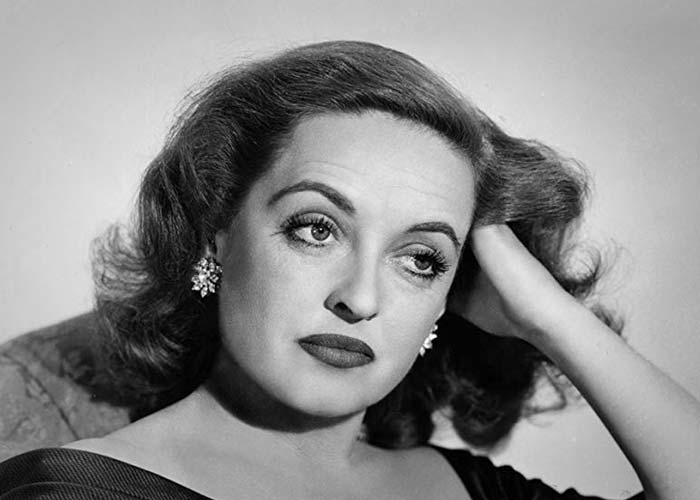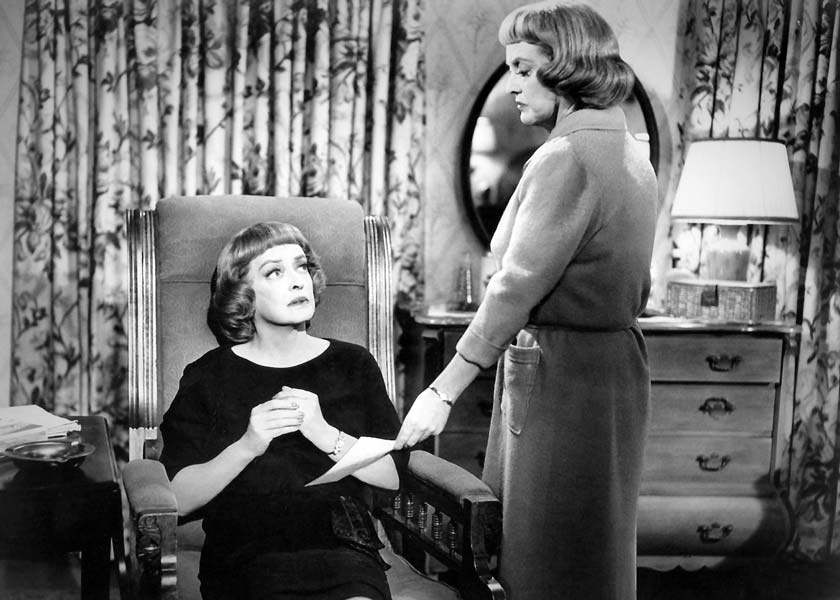Synopsis
Identical twins Margaret DeLorca and Edith Phillips (Davis) meet for the first time in ten years at the funeral of Margaret’s husband, Frank DeLorca. Twenty years earlier, Margaret had taken Frank away from Edith who remains bitter towards her sister. Margaret’s marriage made her wealthy, but Edith only owns a small restaurant. When Margaret visits Edith, Edith kills her and switches identities. Everyone, including Edith’s boyfriend, Detective Jim Hobbson (Malden), accepts the Margaret identity and believes that Edith has committed suicide.
Edith seems secure until Tony Collins (Lawford), who was Margaret’s lover, tries to make love to her and discovers the deception. Tony blackmails Edith, and she gives him expensive jewelry. Detective Hobbson investigates Tony as a suspect in a robbery and searches his apartment. The search turns up arsenic, and suspecting foul play in the death of Frank DeLorca, the body is exhumed and examined. Edith is shocked to learn that Margaret and Tony murdered Frank. Tony is accidentally killed by Margaret’s fierce dog, but the police accuse Edith — they believe she is Margaret — of complicity in murder.
Edith is convicted of the murder of Frank DeLorca. As she is being taken to prison, Edith almost reveals her true identity to Jim, but changes her mind and retains her false identity, thus preserving Jim's fond remembrance of Edith.
Discussion
The plot of this suspense thriller, although convoluted, melodramatic and outlandish, provides a showcase for the dramatic skills and peculiar allure of the middle-aged Bette Davis. The strong-willed twins, whose personalities attract and repel the viewer, are well tailored to Davis’ vocal and physical mannerisms. Karl Malden, a strong dramatic actor, has the non-challenging role of the nice guy friend of Edith. Peter Lawford, formerly a minor MGM leading man, has a brief part as Margaret’s murderous boyfriend. The dual meaning of the title, a reference to the twin sisters who do, and do not, get away with murder, becomes clear at the climax.

After her success in What Ever Happened to Baby Jane? (1962), which earned her a Best Actress nomination, the older, bizarre, psychologically perverse version of Bette Davis had become box office. Jack Warner, head of production at Warner Bros. Studios, wanting to capitalize on this renewed audience draw, choose for her a high-gloss picture with grotesque elements. Dead Ringer is similar to an earlier Davis film, A Stolen Life (1946), in which the surviving sister is innocent of the death of her twin. Both films use process shots and body doubles to realistically show the twin characters simultaneously.
At age 55, Davis was looking decidely middle-aged. Cinematographer Ernest Haller and makeup artist Gene Hibbs do their best to make her look as young as possible, while accentuating in her appearance the macabre aspects of the characters of Edith and Margaret. Although Peter Lawford was fifteen years younger, his looks had declined so that the difference in their ages is not readily apparent.
Director Paul Henried got on well with Davis and provides smooth, sympathetic direction. He focuses his camera on Davis whose responses to events provide all the interest in any given scene. He had been a second-tier leading man for twenty years before he began directing in 1952. He played Bette Davis’ love interest in two films made at the peak of her career, Now Voyager (1942) and Deception (1946). His best-known acting role is Czech Resistance fighter Victor Laszlo in Casablanca (1942). Henreid directed dozens of television episodes, including 28 of Alfred Hitchcock Presents from 1957-62. He directed six modestly budgeted theatrical films whose melodramatic plots revolve around unusual types of crime. Dead Ringer is his best and most important film. Henried’s daughter, Monika, plays Davis’ maid in several scenes.
In his youth, Peter Lawford starred as clean-cut, debonair, and light-hearted rich boys in films such as It Happened in Brooklyn (1947), Good News (1947), Easter Parade (1948), Little Women (1949), and You For Me (1952). During the 1950s he made guest appearences on many television shows and from 1957-59 played Nick Charles in The Thin Man series. By the 1960s, Lawford's charm persisted, but his good looks were fading, and he moved into character parts. Davis and Henreid felt that Lawford did not give his best attention to his role and seemed distracted and dissipated. Enough rakish charm remained to give credibility to his character, however, and some of his scenes with Davis come off well.
Screenwriter Rian James had written the story for Dead Ringer in 1946, and it had been filmed in 1946 as La Otra (The Other One) in a Mexican production starring Dolores Del Rio. James had a twenty-year career as a writer; his scripts, such as for Hat Check Girl (1932), 42nd Street (1933), She Had to Say Yes (1933) and Turnabout (1940), often featured the kind of significant plot twists exemplified by the macabre Dead Ringer.

